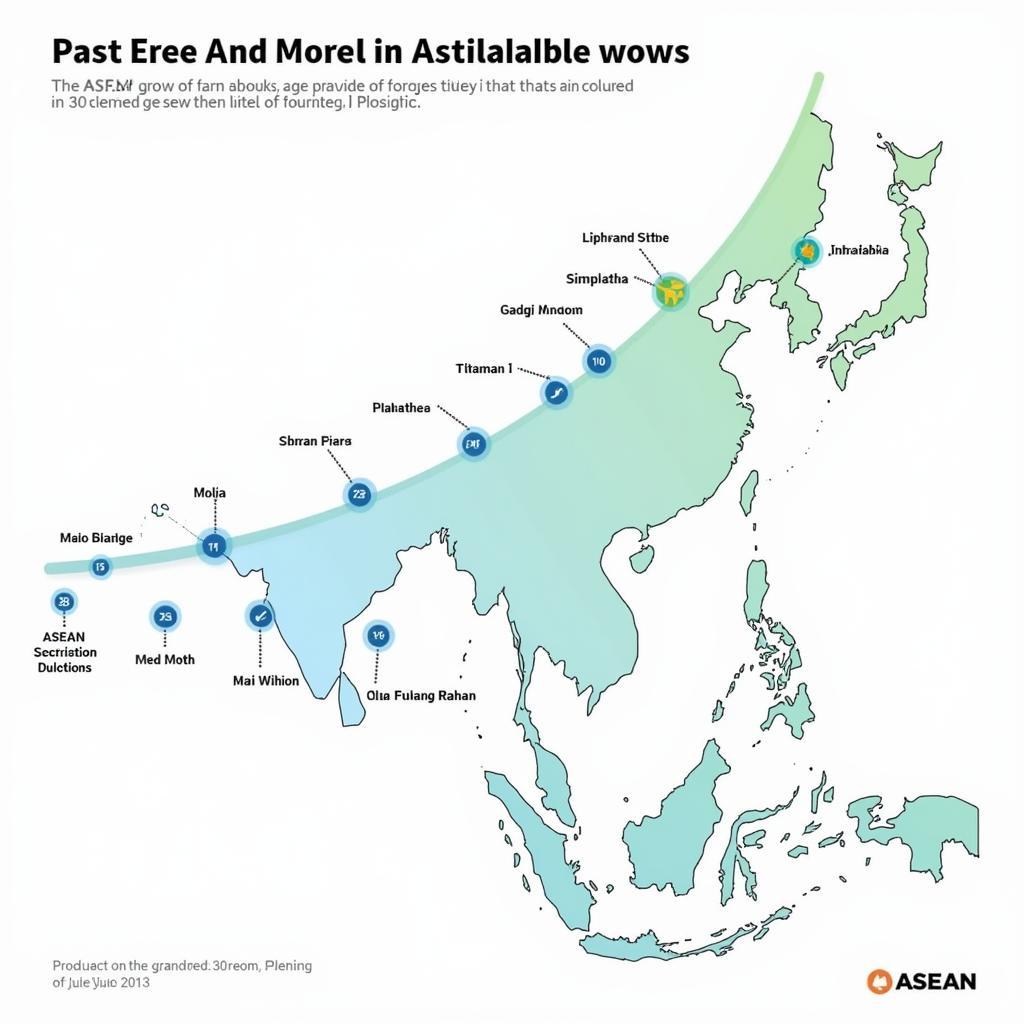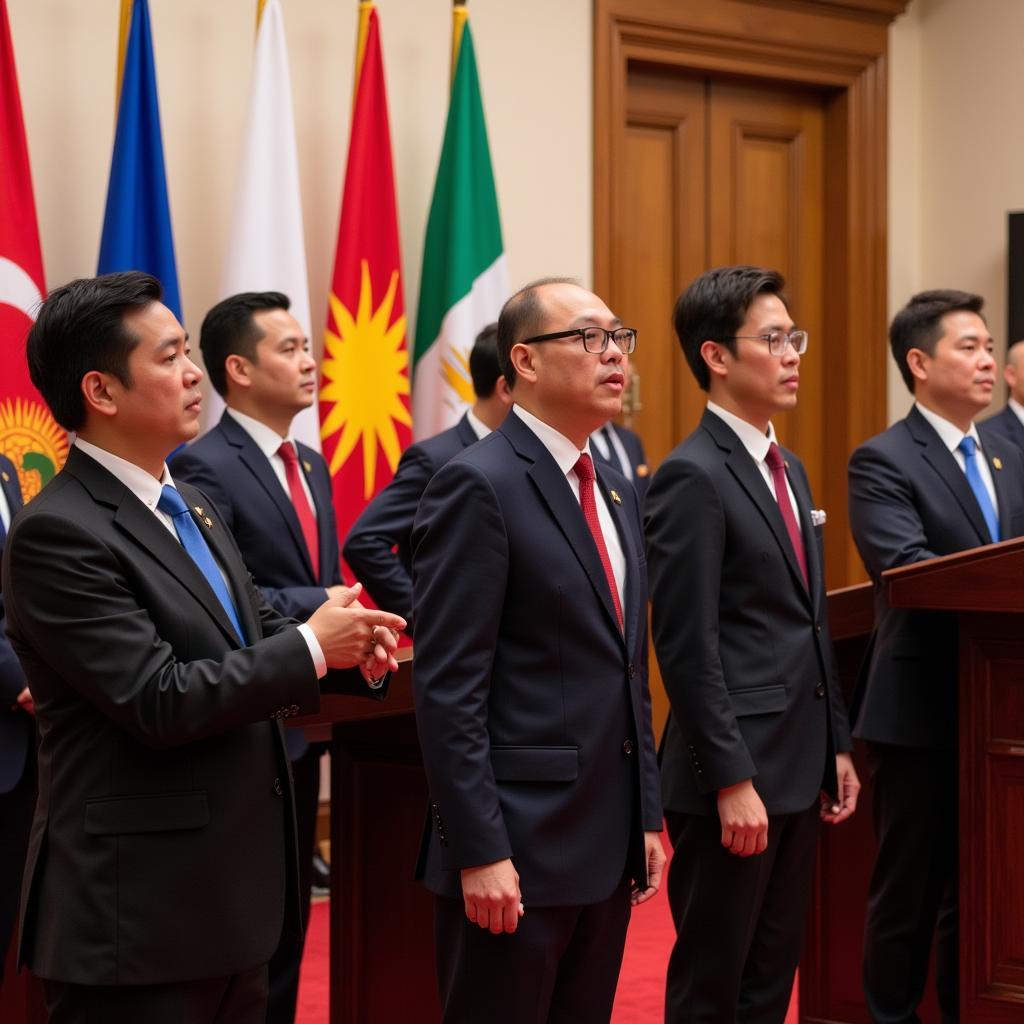The Association of Southeast Asian Nations (ASEAN) is a regional intergovernmental organization comprising ten Southeast Asian countries. At its core are the Asean 7 Aims, guiding principles that shape its operations and aspirations. These aims are crucial for understanding the organization’s role in promoting regional peace, stability, and prosperity. Let’s delve into the core of ASEAN and explore these fundamental objectives.
ASEAN, guided by the ASEAN 7 aims, seeks to foster collaboration among its member states. These aims provide a roadmap for regional development, focusing on economic, social, cultural, and political cooperation. From promoting peace and security to accelerating economic growth, these objectives are interconnected and essential for the overall well-being of Southeast Asia.
Exploring the Core of the ASEAN 7 Aims
The ASEAN 7 aims are the foundation upon which the organization operates. They provide the framework for its activities and guide its long-term vision. Each aim addresses a specific aspect of regional development, contributing to the overall goal of a peaceful, prosperous, and integrated Southeast Asia.
- Accelerated Economic Growth: ASEAN aims to boost economic growth, social progress, and cultural development within the region. This involves promoting trade, investment, and economic cooperation among member states.
- Social and Cultural Development: The organization is committed to enhancing social progress and cultural development through joint endeavors. This includes promoting education, health, and social welfare programs.
- Regional Peace and Security: Maintaining peace and stability within the region is a paramount objective. ASEAN actively promotes peaceful conflict resolution and cooperation on security issues.
- Effective Regional Cooperation: ASEAN facilitates cooperation among member states in various areas, including trade, investment, and sustainable development. This fosters regional integration and strengthens the collective voice of Southeast Asia.
- Collaborative Partnerships: The organization seeks to establish collaborative partnerships with other international organizations and countries. This helps to promote dialogue, cooperation, and mutual understanding on global issues.
- Strengthening ASEAN Identity: ASEAN aims to strengthen its identity as a cohesive and unified regional bloc. This involves promoting shared values, cultural exchange, and people-to-people connectivity.
- Enhanced Competitiveness: ASEAN strives to enhance the competitiveness of its member states in the global economy. This involves promoting innovation, technological advancement, and skills development.
You can learn more about ASEAN’s involvement in promoting stability by visiting our page on asean and stability in indonesia.
 ASEAN Economic Growth Chart
ASEAN Economic Growth Chart
How the ASEAN 7 Aims Promote Regional Integration
The ASEAN 7 aims, while distinct, are interconnected and work synergistically to promote regional integration. By fostering cooperation and collaboration in various fields, ASEAN creates a sense of community and shared purpose among its diverse member states.
- Economic integration: By promoting trade and investment liberalization, ASEAN facilitates the free flow of goods, services, and capital within the region.
- Political cooperation: ASEAN provides a platform for dialogue and cooperation on political and security issues, contributing to regional stability.
- Social and cultural exchange: Through educational and cultural exchange programs, ASEAN fosters understanding and appreciation of the diverse cultures within the region.
More information on ASEAN’s global reach can be found on the ase global page.
 ASEAN Cultural Exchange Program Participants
ASEAN Cultural Exchange Program Participants
The Importance of the ASEAN 7 Aims in a Globalized World
In an increasingly interconnected world, the ASEAN 7 aims are more relevant than ever. They provide a framework for regional cooperation and integration, enabling ASEAN to address global challenges collectively. These aims also position ASEAN as a key player in the global arena, fostering partnerships with other countries and international organizations.
- Addressing global challenges: ASEAN can effectively address global issues such as climate change, terrorism, and pandemics through regional cooperation.
- Promoting multilateralism: ASEAN’s commitment to multilateralism strengthens the international order and promotes peaceful conflict resolution.
For additional resources related to ASEAN’s structural framework, you can explore our ase structural dvd.
Conclusion: The Future of ASEAN and Its 7 Aims
The ASEAN 7 aims are not static but evolve with the changing global landscape. They provide a dynamic framework that allows ASEAN to adapt to new challenges and opportunities. These aims will continue to guide ASEAN’s efforts to build a more integrated, prosperous, and resilient Southeast Asia. The organization’s commitment to these core principles ensures its continued relevance in the 21st century. The future success of ASEAN depends on the continued commitment to and implementation of these ASEAN 7 aims.
Explore more about ASEAN coverage on the bbc asean page.
FAQ
- What are the main objectives of ASEAN?
- How do the ASEAN 7 aims contribute to regional stability?
- What is the role of ASEAN in promoting economic growth?
- How does ASEAN foster cultural exchange among member states?
- What are the key challenges facing ASEAN in achieving its aims?
- How does ASEAN collaborate with other international organizations?
- What is the significance of the ASEAN 7 Aims in the context of globalization?
For further assistance, please contact us at Phone Number: 0369020373, Email: aseanmediadirectory@gmail.com or visit our address: Thon Ngoc Lien, Hiep Hoa, Bac Giang, Vietnam. We have a 24/7 customer service team.


